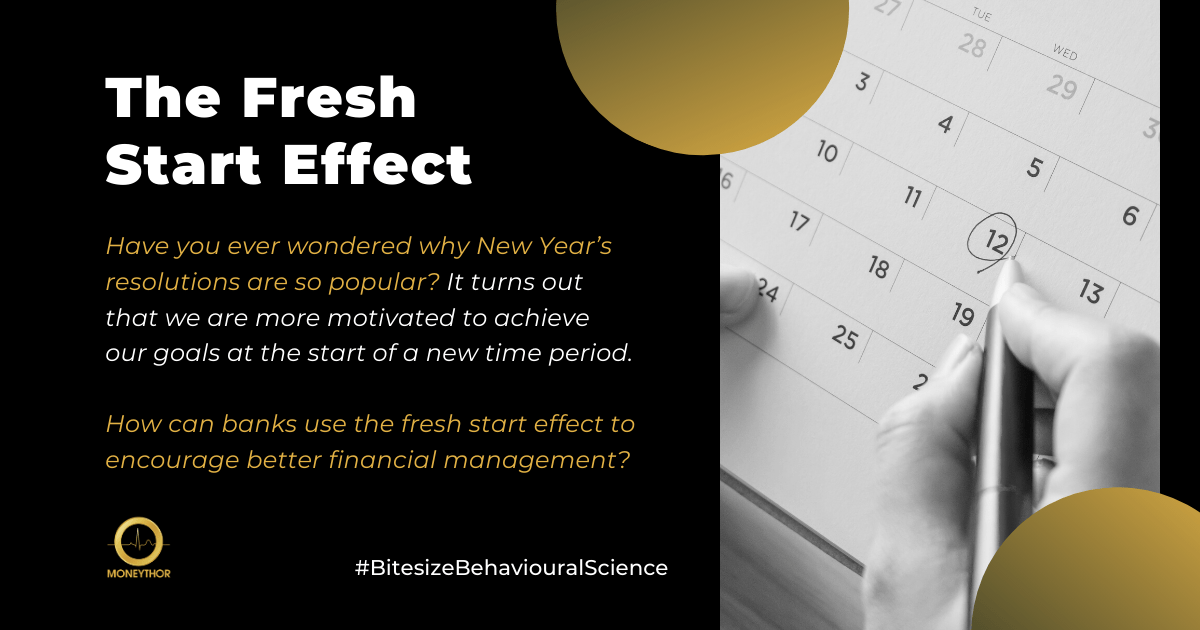Have you ever wondered why New Year’s resolutions are so popular? It turns out that when starting a new habit or setting a new goal like a healthy diet, regular savings or studying for an exam, people are more able to motivate themselves to achieve their goals at the start of a new time period. So, if you start your new health kick at the beginning of the week, month or on a national holiday like New Year’s Eve, you are more likely to be successful because it highlights the separation of the past from the upcoming new beginning.
The reason the fresh start effect happens is because, temporal landmarks, which are days that stand in marked contrast to the seemingly unending stream of trivial and ordinary occurrences, act as a kind of mental reset button to keep us on track and dedicated towards achieving our goals. These temporal landmarks act as a fresh start or clean slate when people can forget their past failings and focus on the future.
Fresh starts are a good opportunity to nudge your customers in a direction that is beneficial for them and for your business. It is a chance to influence customers to improve their financial lives and make sounder long-term financial decisions.
How can banks use the fresh start effect to encourage better financial management?
- Use temporal landmarks to encourage savings
Financial well-being and personal financial management are closely linked. By providing customers with PFM tools like budget setting or cashflow forecasting you can improve their financial well-being. A key tenant of PFM is setting financial goals that encourage customers to save regularly for a particular reason.
By considering the fresh start effect and implementing nudges around a temporal landmark that encourage saving money for the future, customers will be more motivated to achieve their goals and more likely to succeed in reaching them. Continued encouragement at various temporal landmarks can effectively motivate continued behaviour change overtime so they can be used as an ongoing tool to maintain motivation.
- Understand customer behaviours and goals
People’s motivations and aspirations change depending on the time of year, for example in summer, people may be more motivated to exercise in preparation for a sun holiday, whereas in winter people may be more motivated to save money and stay at home.
Understanding how your customers’ aspirational behaviours change depending on the time of year can help to structure your campaigns and nudges so that you can take advantage of the fresh start effect. It is important to understand what occasions or temporal landmarks are most meaningful to customers.
- Align promotional messaging with temporal landmarks
By aligning promotional messaging with temporal landmarks, customers will be more motivated to purchase a financial product or service.
For example, a bank could promote their mortgage offering by creating a “New Year, New Home” campaign in the run up to and just after New Year’s Eve or when an annual bonus is paid customers could be encouraged to start investing. Using these time periods as starting points will help customers to forget their past behaviours and focus on their future-self.
Understanding the fresh start effect and how it can help customers to pursue their goals can lead to improved financial-wellbeing and increased success for marketing campaigns. Look at the key temporal landmarks that are important to your customers and build your campaigns and nudges around these important dates.

